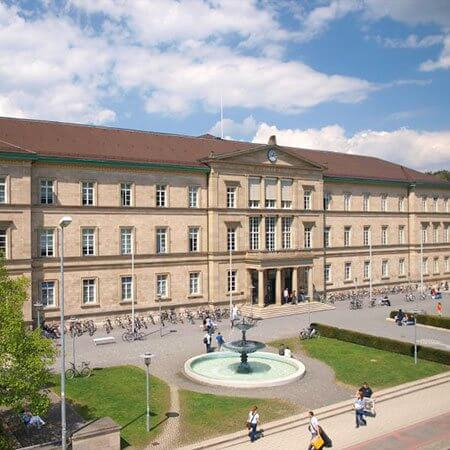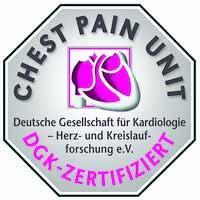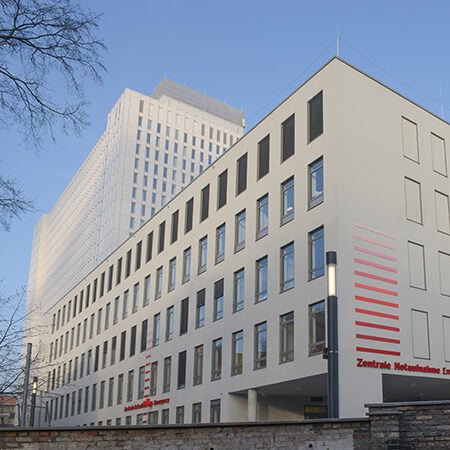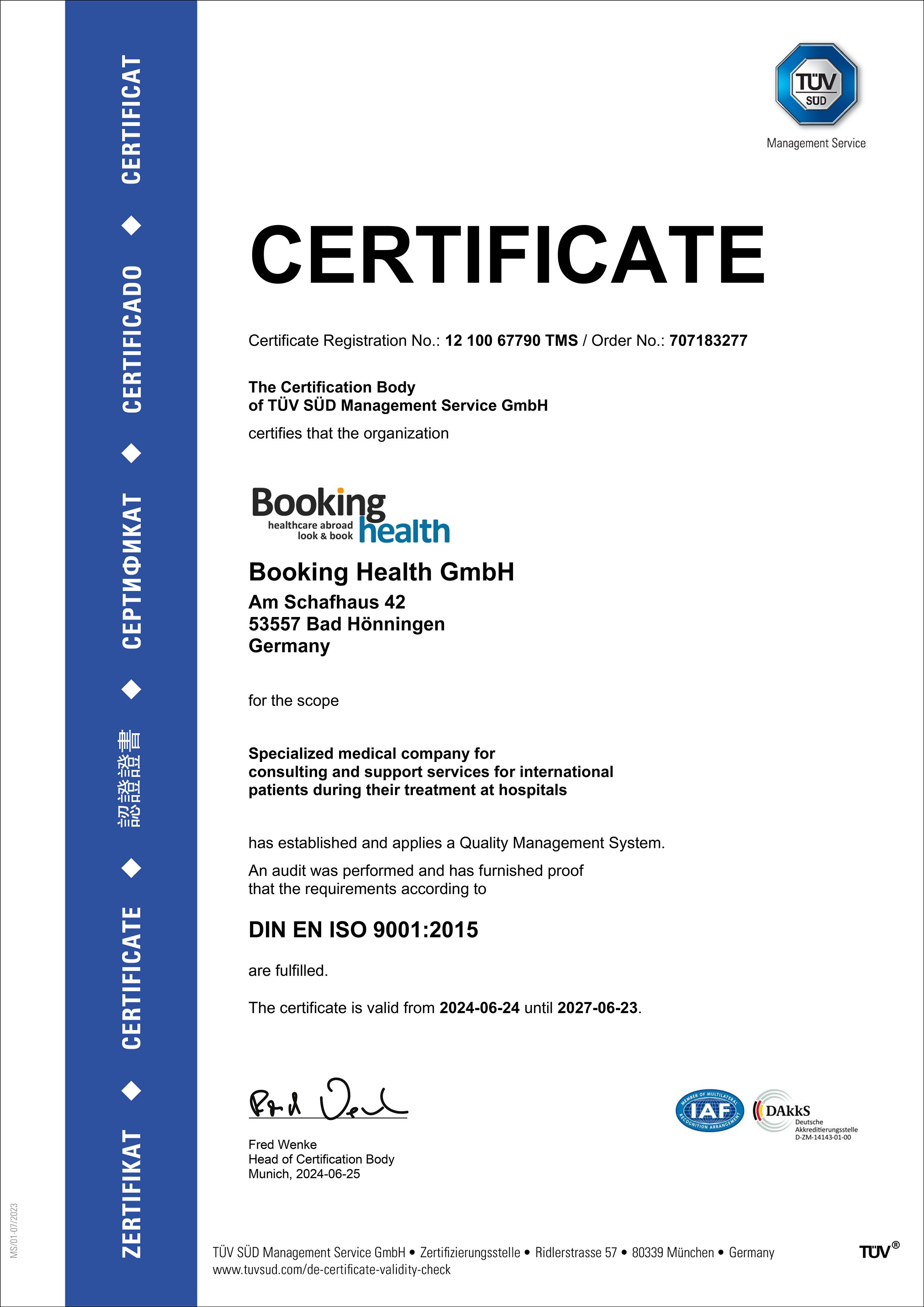Heart defects are abnormalities and defects in the structures of different heart regions. Congenital defects are caused by abnormalities in the intrauterine development of the heart, usually between the 3rd and 8th weeks of pregnancy. Acquired malformations develop during life due to various changes in the heart. Malformations most commonly interfere with the blood flow in the large or small circulatory system.
Content
- Overview
- Congenital heart defects overview
- About acquired heart defects
- Symptoms of congenital and acquired heart defects
- Can congenital heart defects be diagnosed before birth?
- Treatment of congenital and acquired heart defects
- The best European hospitals for treatment
- The cost of treatment in Europe
- Treatment in Europe with Booking Health
Overview
Heart defects, whether congenital or acquired, are deviations of structures of the organ (valves, walls, vessels) that significantly impede blood flow within the organ or in the circulatory system. As the main disruptors of hemodynamics, heart defects can be congenital (occurring during intrauterine development) and acquired (formed due to pathologies or other deforming factors).
The causes of acquired heart disease are associated with many problems such as rheumatism, syphilis, atherosclerosis, and other serious diseases. Acquired heart defect does not appear immediately after birth, but over time. It usually appears in the form of abnormal functioning of the valve apparatus of the muscular organ.
Congenital heart defects are often diagnosed (the rate is 8-10 cases per 1,000 births) and for many years they have been the leading cause of death among newborns. Unfortunately, doctors often fail to notice congenital heart defects when monitoring pregnancy. This is due to some factors like lack of sufficiently qualified doctors and upgraded equipment, and peculiarities of fetal blood flow. The congenital disease affects the walls of the myocardium and large vessels. The congenital disease can progress and lead to changes in the structure of the heart muscle. To avoid a fatal outcome, newborns are operated on. Regardless of the type of particular heart disease, the general principles of treatment are distinguished, which we will review further.
Minor defects can not manifest themselves in any way for a long time, thus preventing their timely detection. Such patients may live many years without any specific disturbances. As a rule, more significant defective diseases begin to progress already at the stage of being accompanied by pronounced symptoms. Clinical manifestations of such heart diseases become more pronounced with time and indicate the appearance of cardiopulmonary insufficiency.
If the problem is timely detected, doctors perform a surgical intervention (in situations of the significant impact of the diseases), after which the patient's quality of life and life expectancy increase.
Congenital heart defects overview
Congenital defects are abnormalities of the heart and great vessels that form during embryonic development and result in hemodynamic disturbances – the movement of blood through the vessels, which can lead to heart failure and dystrophic changes in the tissues of the body.
The highest incidence of congenital defects is noted in low birth weight infants, especially those born prematurely. In terms of incidence, congenital heart defects rank third after musculoskeletal and nervous system congenital abnormalities.
All congenital heart defects can be divided into main groups and can occur independently or in various combinations, including:
- Atrial, ventricular, and atrioventricular septal defects.
- Heart valve stenosis or insufficiency.
- Single ventricle heart defect.
- Transposition of the great vessels.
- Dextrocardia (abnormal location of the heart in the right side of the chest).
Approximately 50% of patients with congenital heart disease require therapeutic or surgical intervention in the first year of life. In half of these cases, the critical condition is associated with heart failure and half with arterial hypoxemia or patent ductus arteriosus. Children with isolated rhythm disturbances constitute a relatively small group.
Ventricular septal defect separately amounts to about 30% of all cardiac defects. It does not require any treatment in more than 80% of cases, as the defect may disappear by itself in the child during the first months or years of life.
About acquired heart defects
Acquired heart defects imply various morphological changes in the heart that develop as a result of chronic heart disease or trauma to this organ.
Up to 90% of acquired heart defects are rheumatic. Acquired heart defects cause high stress on the corresponding parts of the heart muscle, lead to myocardial enlargement and result in heart failure. The main organ consists of 4 chambers: left atrium and ventricle, mitral valve, right atrium and ventricle, and tricuspid valve.
A severe inflammation usually starts in the valve leaflets, which damages them and provokes collapse and scarring. If the valves function under additional strain, thickening of the sections of the heart muscle occurs. Because of the pathological process, the heart cavities begin to dilate, the muscle begins to contract poorly and symptoms of heart failure develop.
As soon as a person notices a problem with the proper functioning of the heart, they should immediately contact a medical practitioner. Without timely treatment, acquired heart diseases can be catastrophic.
Symptoms of congenital and acquired heart defects
Before we go into the clinical manifestation of the acquired diseases, it should be noted that there are different ways to approach the clinical manifestation of acquired heart defects.
Firstly, the disease that is at the root of the defect is taken into account, most common of which are rheumatic heart disease, infective endocarditis, atherosclerosis, and syphilis. Secondly, several heart structures can be affected by the inflammation process. Thirdly, the possibility of the defect being combined should be taken into consideration. Therefore, the clinical manifestation of acquired heart defects vary.
For example, with mitral valve insufficiency, pain in the heart area, shortness of breath, edema, and heart palpitations can occur. Coughing, hemoptysis, and hoarse voice are added to the mentioned symptoms if mitral stenosis accompanies the condition. For instance, aortic stenosis is a cause of pain in the chest area, dizziness, and fainting. On the other hand, aortic insufficiency can be signaled by pain in the heart and right side of the stomach, dizziness, fainting, breathlessness, and edema.
A congenital heart defect may not show itself immediately outwardly. The child usually is not bothered by any symptoms for some time after birth, and manifestations may occur until the third year of life. Later, manifestations can include retardation, shortness of breath during activity, pallor, or even a blue tint to the skin.
Congenital pathology is usually diagnosed in infancy or early childhood. The defect may have the following symptoms:
- Pallor or lividity of the skin, increasing with any exertion.
- Swelling of the extremities.
- Unexplained loss of consciousness followed by a cold sweat.
- Dyspnea on exertion and at rest.
- Retardation in weight gain, physical development, and muscle weakness.
- Restlessness, refusal to breastfeeding.
- Increased or decreased heart rate for no apparent reason.
Older patients may also complain of heart and chest pain, and dizziness.
Pathologies accompanied by pallor of the skin are characterized by sudden onset of attacks. There may be anxiety or panic attacks, cyanosis, dyspnea, and possibly loss of consciousness. This condition usually occurs in children under two years of age.
Congenital heart defects occur in 1% of all infants and are the leading cause of death in children under one year of age. Adult congenital abnormalities are much less common (about 0,2%). This is because congenital diseases usually manifest themselves immediately after birth or during infancy and are either fatal or can be successfully corrected by surgery.
The outcome depends directly on the stage, which the congenital heart defect is diagnosed at. Therefore, none of the possible symptoms should be overlooked. A visit to the doctor with abnormal changes in the heart functioning detected should be immediate.
If you experience these symptoms or notice these symptoms in a child, you should make an appointment to see a cardiologist, who will carry out the necessary tests, give you an accurate diagnosis and help you deal with the condition.
Can congenital heart defects be diagnosed before birth?
The answer is yes. Some congenital heart defects can be diagnosed before birth. One of the main methods of diagnosing heart defects in the baby is an ultrasound scan. Some congenital defects that usually are not compatible with life can be detected in the first trimester of pregnancy (13-14 weeks), but most congenital defects can be diagnosed at 18-22 weeks of pregnancy (during the so-called second screening). Pregnant women at risk may be prescribed additional ultrasound scans in addition to routine ones. Unfortunately, only around 10% of all congenital heart defects are diagnosed prenatally.
Many factors can influence the occurrence of congenital heart defects. Among them:
- Genetic predisposition (for example, if the first child is born with a congenital heart defect, there is a possibility of developing this pathology in the second child as well).
- Viral diseases during pregnancy.
- Maternal age (the older the pregnant woman is, the more likely the child will develop heart disease).
- Diabetes in the mother.
- Chronic alcoholism in the mother.
The accuracy of the diagnosis depends on the equipment used for the examination and the qualifications of the doctor.
If the heart defect is diagnosed during pregnancy, doctors can develop treatment plans in advance and refer the pregnant woman to a specialized medical facility to establish the exact diagnosis and decide whether surgery will be necessary. All of this is of paramount importance, as the life of the newborn depends on how soon after birth the treatment is carried out.
During the neonatal period (28 days after birth), surgical correction is only carried out for critical congenital heart defects, where without surgery the patient is doomed to die within days or months. Around 30-40% of patients need surgery almost immediately after birth and some may require endovascular (closed) surgery. This is why an early and accurate diagnosis is extremely important.
It is therefore essential to have routine screenings or additional ultrasound examinations to check for possible congenital heart defects in the child. Even if there is the slightest doubt about the diagnosis, a follow-up examination in a facility with the appropriate medical equipment and qualified specialists who can diagnose and, if necessary, plan further treatment is essential.
Treatment of congenital and acquired heart defects
If the heart defect is compensated, i.e. there is no heart failure, surgical treatment can be delayed. In this case, treatment for congenital disease can be given for symptomatic purposes. In all other cases, the treatment methods for the elimination of the congenital heart defects correspond with the ones used for acquired diseases, with a possibility of modification, of course. However, in general, congenital heart defects can only be treated by the means of surgery.
Acquired malformations, on the other hand, have stages, which differentiates these diseases from congenital ones. In the compensated stage, follow-up is recommended. When clinical manifestations appear, drug therapy is recommended. With the progression of the disease, referral to a cardiac surgeon for surgical correction of the heart defect is usually considered.
The treatment tactics for acquired heart defects in Europe include:
- Treatment of the underlying disease, which has caused the formation of the defect.
- Treatment of heart failure according to general guidelines, taking into account the type and severity of the defect.
- Management and prevention of heart rhythm disturbances.
- Prevention of thromboembolic complications in high-risk patients.
- Prevention of infective endocarditis, as patients with heart defects are at risk.
Modern surgical procedures offer possibilities to relieve the growing child of the prospect of severe diagnoses and poor quality of life. The main types of heart valve surgical procedures for acquired valve malformations include open valvuloplasty (commissurotomy, annuloplasty), balloon valvuloplasty of mitral and aortic valves, and heart valve prosthetics.
Regardless of whether the defect is congenital or acquired, a qualified cardiologist will draw up a personalized therapy plan. The doctor will also prescribe comprehensive preventive measures to prevent cardiac disease. An intrauterine heart defect is difficult to prevent, but despite this fact they are subjected to treatment as well.
The best European hospitals for treatment
Cardiology in Europe is developing at an enormous pace. Doctors at the European hospitals are introducing new developments as soon as they are successfully tested. To be assured of receiving the services of a qualified doctor, it is best to seek help from reputable European hospitals, such as:
- University Hospital of Ludwig Maximilian University of Munich, Germany.
- University Hospital Frankfurt am Main, Germany.
- Catholic Clinic Koblenz-Montabaur, Germany.
- Academic Hospital Brothers of Mercy Munich, Germany.
- Bundeswehr Academic Hospital Berlin, Germany.
- Assuta Hospital Tel Aviv, Israel.
You can get a consultation regarding the best hospital in Europe for your clinical diagnosis by sending your request to Booking Health.
The cost of treatment in Europe
Many people are familiar with the cardiology departments of European hospitals. The doctors who work there have extensive practical experience and apply the latest methods of heart and vascular disease treatment. Various methods of surgical and therapeutic treatment, including cardiac rehabilitation, are successfully applied in Europe.
As many factors influence the choice of a specific treatment method, such as the extent and severity of the malformation, the age of the patient, the necessity of surgical procedures, and the need for further rehabilitation, etc., the exact cost of treatment in Europe will be known after the diagnostic examination.
The average prices, however, can help you make an informed decision regarding the treatment in Europe.
So, on average, the price for the establishment of the heart defect diagnosis in European hospitals will be over 450 EUR and the price for rehabilitation usually starts at 600 EUR; the cost of treatment with conservative therapy and Holter monitoring starts at 1,406 EUR, and cost of treatment with surgery you are most likely to find out after undergoing diagnostics.
If you want to know the exact price for treatment with a specific method, contact Booking Health.
Treatment in Europe with Booking Health
If the option to undergo diagnostics and treatment in Europe by leading cardiac specialists has interested you and you want to know more about treatments and prices, please contact us by leaving your request at the Booking Health website and our medical experts will contact you shortly.
If you have any general questions about treatment in Europe, the Booking Health website will be of help. You can also read reviews about treatment in Europe from our patients at the bottom of each page.
Authors:
This article was edited by medical experts, board-certified doctors Dr. Nadezhda Ivanisova, and Dr. Bohdan Mykhalniuk. For the treatment of the conditions referred to in the article, you must consult a doctor; the information in the article is not intended for self-medication!
Our editorial policy, which details our commitment to accuracy and transparency, is available here. Click this link to review our policies.




















